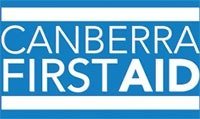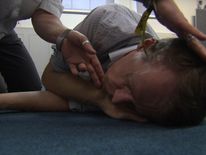A working knowledge of first-aid can empower you to save lives.
In the summer of 2010, A.N. Venkatesh, senior consultant and head of department, emergency services, at the Apollo Hospital in Bengaluru, was taking swimming lessons when he sensed panic and unrest around him. Instructors had pulled an unconscious student out of the 17m-deep pool, and no one knew how long he had been under water.
“I elbowed my way through the crowd, introduced myself as a doctor and tried to resuscitate him,” says Dr Venkatesh. “The crowd had already wasted precious seconds milling around and pressing down on his tummy—a useless technique to revive a drowning person,” he says.
The young man died. Dr Venkatesh rues the fact that there was absolutely no first-aid equipment at hand. “In the case of drowning, oxygen supply to the brain is cut off. If such a condition exceeds 4-5 minutes, it can result in irreversible brain damage,” he says.
What could have helped save the young man’s life was a simple machine called Automated External Defibrillator (AED). “An AED is a portable electronic device that administers a small electric pulse that helps revive the rhythm of the heart and restores blood circulation. Anyone can operate it. It’s a simple push-button device that needs to be placed over the chest to be activated. If someone had been more alert at the pool that day and an AED was available, it could have helped us save a life,” says Dr Venkatesh.
CPR, or cardiopulmonary resuscitation, can be used on a drowning victim if he or she is pulled out of the water immediately. If the time submerged under water exceeds 5-7 minutes, CPR will not revive the victim. In such a case, an AED might help. The device can also help those with sudden cardiac arrest.
While AEDs can be purchased easily on online portals like Amazon and eBay, they can cost up to Rs.25,000, making them an expensive proposition for individuals. Placing an AED in public spaces like swimming pools, shopping centres, schools and corporate offices, as is done abroad, should be made mandatory, believes Dr Venkatesh.
There’s no denying that greater education in, and awareness about, first-aid is needed in India. “In 1992, during the stampede that occurred at Mahamaham, a religious festival in Kumbakonam in Tamil Nadu, it was reported that 40 people were killed. What wasn’t reported was that our trained field workers were able to save 13 lives that day,” says K.J. Suryanarayanan, 52, a first-aid and basic life support trainer at Chennai’s St John Ambulance, the first-aid education and training wing of the Indian Red Cross Society (IRCS), with multiple centres in every state.
The good news is that it is possible for people of all ages to get first-aid training, regardless of where they live or their educational qualifications.
Help at hand
Even if you don’t have any medical or science background, you can take one of two courses in first-aid, depending on your needs. The first is a basic first-aid course, also referred to as the Emergency First Responder course. This will equip you with the essential life skills required to respond quickly to medical emergencies. The second is an advanced first-aid course, which will help you survive under harsh conditions in the wild. The former is far more commonly offered and would be sufficient for most.
A basic first-aid course involves CPR training and use of an AED device, and dealing effectively with emergency medical situations, including suffocation, head injury, stroke, wounds, bleeding, fracture, muscular and joint injury, burns, heart attack, snake and scorpion bites, allergic reactions, heat stroke and diabetic emergencies.
“Usually conducted over two days, you will learn life-saving techniques (in the basic course), such as CPR, how to use a defibrillator device, and the basics of first- aid (dressing cuts, scrapes, wounds and fractures). It also teaches you how to identify an unconscious person, how to check if the neck has a pulse, treat snake and scorpion bites, and what to do to resuscitate people in different circumstances, ranging from choking accidents to household fires,” says G. Rajesh, supervisor (disaster management), at the IRCS in Chennai.
Deepak Mudaliar, a 31-year-old physiotherapist based in Chennai, attended first-aid classes offered by St John Ambulance in his city in 2005. “We were given a mannequin with a deflated lung and were taught resuscitation techniques. We practised by blowing air into it,” he says. “Proper hand placement while giving chest compressions is important. These are things that you need practical training for.”
If you have an ailing parent or a young child at home and find yourself in the role of a caregiver often, a basic first-aid course can come in handy.
Swapna Kishore, 59, runs Dementiacarenotes.in, a website for caregivers of dementia patients. Kishore took a basic first-aid course in December 2008 while caring for her mother, who suffered from dementia. “I did the course to confirm what I already knew about first-aid and to make sure I had retained a grasp of key skills,” she says. “I considered it necessary because I was caring for my mother, who was becoming increasingly dependent and immobile. The practical training and demonstrations in the course helped a great deal. We were given a booklet at the end and a card with information on CPR techniques.”
Kishore advises family members and caregivers to attend a course at least once and to keep first-aid books and supplies handy at all times.
“If you have elderly parents or young children, the basic first-aid course will be extremely beneficial,” says Suryanarayanan. “You may be confronted with day-to-day challenges and emergencies such as choking, nose bleeds and convulsions. The basic first-aid course will help you face any traumatic situation more effectively and with a greater sense of confidence.”
Advanced knowledge
If you are someone who likes to trek or camp outdoors, often in harsh, demanding conditions, consider an advanced wilderness first-aid course. It usually includes a written test and provides information on how to survive in harsh conditions in the wild, managing wounds, treating injuries to the spinal cord or surviving extreme weather conditions, which a basic first-aid course won’t address.
Ashna Bhel, a 32-year-old, Delhi-based mountaineer and freelance instructor for adventure camps, took a Wilderness First Responder course from the National Outdoor Leadership School (Nols) in the US. Nols India offers the same course in Ranikhet, Uttarakhand (see Learn To Help).
“I learnt how to treat blisters and ankle sprains and deal with wounds and dehydration issues,” says Bhel. This training differs from basic first-aid training courses because it helps you become aware of your surroundings and helps you deal with emergency situations that you would not normally face in day-to-day life, she adds. “Learning how to identify AMS (acute mountain sickness), for instance, was a very important part of my training because as a mountaineer, I needed to be aware of the health issues that could crop up as a result of high altitudes,” says Bhel.
If you don’t travel or work outdoors, however, this course may not be as useful as a basic course.
Critical moments
The most important benefit of a first-aid course is the ability to identify and distinguish between different kinds of ailments and medical emergencies. “Not only can this save lives, but timely identification and treatment will help make recovery quicker and easier,” says Amutha Senthivel, a physician specializing in family medicine and diabetology at the Apollo Clinic in Chennai. “There is a greater need for emergency first-aid training in a country like India where, often, even if you have access to an ambulance, medical aid can’t be availed of right away,” she says.
“We’ve often heard doctors speak of the golden hour (when a patient must be treated within an hour of the appearance of symptoms) but, in reality, in most emergency situations, we often have only minutes to revive a patient and ensure that there is no lasting brain damage,” says Dr Venkatesh. “Since emergency care must be administered immediately, often the caregiver/bystander is the only person in a position to act right away. In my practice in India, I have found that 95% of the caregivers have no awareness of basic medical aid,” he adds.
According to Dr Senthivel, precious time is often wasted in taking a patient to the wrong specialist or hospital.
Training and awareness of first-aid, say the experts, should ideally begin early, preferably around the age of 15.
There is a growing need to empower communities to respond effectively to health problems. Emergency training must consider factors such as the trainee’s place of living. Preeti Kumar, director of training at the Public Health Foundation of India, a public-private initiative of the Union government to strengthen training, research and policy development in the area of public health, says: “If you live by a highway, your training should involve a better responsiveness to road accidents. If you live in a rural community, far away from a big hospital, your emergency training needs will differ.”
Learn to help
First Aid courses in Canberra are offered by many providers however our first aid courses offer you a good basic level knowledge that is not too over the top and that you wont forget. With all of our first aid courses you will receive a free first aid manual to keep and you will also receive a free cpr keyring facemask. Book into one of our first aid courses at www.canberrafirstaid.com







